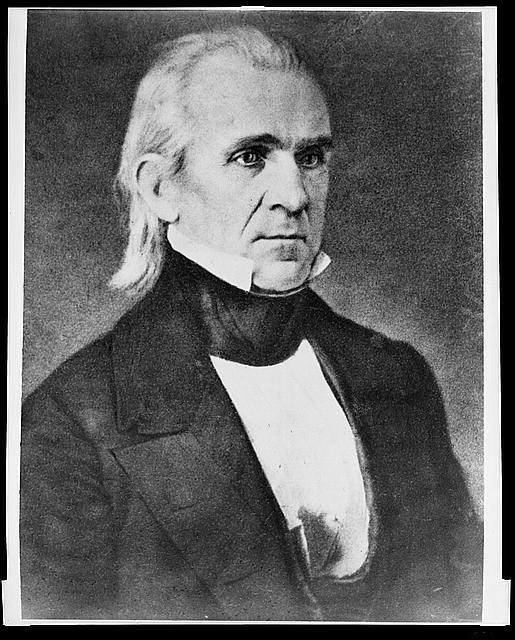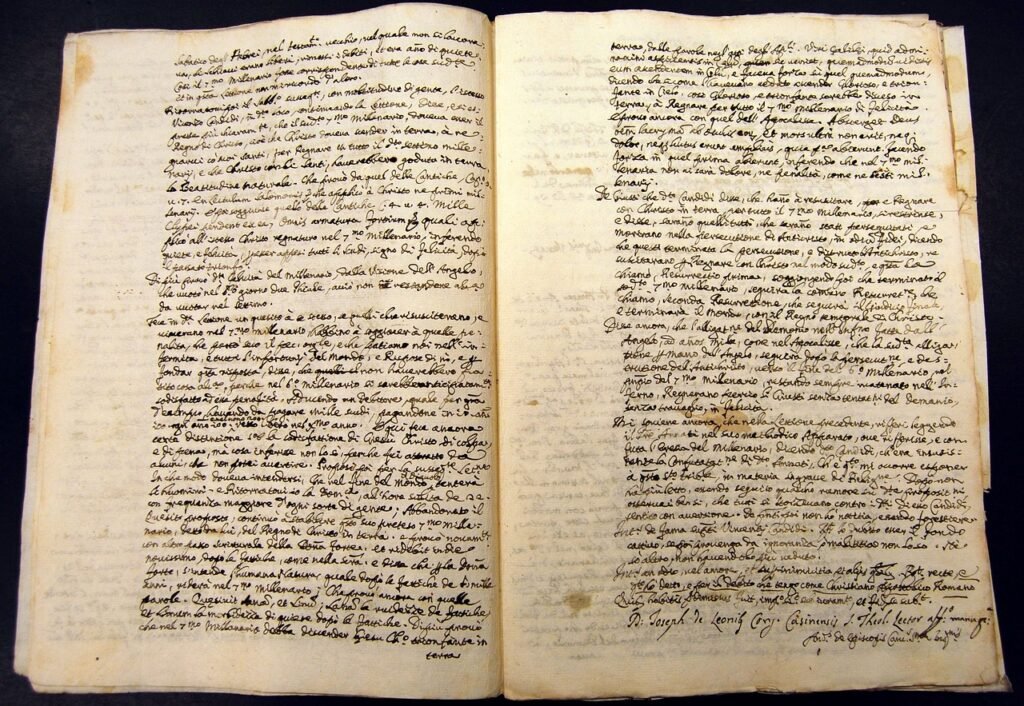




James K. Polk Biography
James Knox Polk, the 11th President of the United States, is often remembered for his steadfast dedication to fulfilling the ambitious goals he set for his presidency. Serving from 1845 to 1849, Polk’s tenure was marked by significant territorial expansion, economic reform, and strong executive leadership. Despite being a relatively obscure figure before his presidency, Polk’s single-minded pursuit of his agenda left an indelible mark on the United States. This biography explores the life, career, and legacy of James K. Polk, highlighting his profound impact on American history.
Early Life and Education
Birth and Family Background
James Knox Polk was born on November 2, 1795, in a log cabin in Pineville, North Carolina. He was the eldest of ten children born to Samuel and Jane Knox Polk. The Polk family was of Scots-Irish descent and had been in America since the early 1700s. Samuel Polk was a prosperous farmer and surveyor, while Jane Knox Polk was known for her strong Presbyterian faith, which she instilled in her children (Haynes, 2008).
Education and Early Influences
Polk’s early education was informal and sporadic due to the family’s frequent relocations. In 1806, the Polks moved to the Duck River area in Tennessee, where they established a successful plantation. At the age of 17, Polk underwent surgery to remove urinary stones, a painful and risky procedure at the time, which he endured without anesthesia. This experience demonstrated his remarkable endurance and determination (Haynes, 2008).
In 1813, Polk enrolled in a local academy and then transferred to the Murfreesboro Academy. His academic performance impressed his teachers, leading to his enrollment at the University of North Carolina at Chapel Hill in 1816. Polk excelled in his studies, particularly in mathematics and the classics, and graduated with honors in 1818. His time at university also exposed him to the influential ideas of republicanism and the importance of civic duty, which would shape his political philosophy (Haynes, 2008).
Early Political Career
Legal Training and Entry into Politics
After graduating, Polk studied law under the prominent Nashville attorney Felix Grundy. He was admitted to the bar in 1820 and established a successful law practice in Columbia, Tennessee. Polk’s legal career provided him with a platform to enter politics. He married Sarah Childress in 1824, a union that would prove both personally fulfilling and politically advantageous, as Sarah was a well-educated and politically astute partner (Merry, 2009).
Tennessee State Legislature
Polk’s political career began in the Tennessee House of Representatives, where he served from 1823 to 1825. As a state legislator, Polk quickly became known for his strong oratory skills and his firm support of Andrew Jackson, a fellow Tennessean and emerging political leader. Polk’s alignment with Jacksonian principles of limited federal government and states’ rights earned him the nickname “Young Hickory,” a testament to his loyalty to “Old Hickory” Jackson (Haynes, 2008).
U.S. House of Representatives
In 1825, Polk was elected to the U.S. House of Representatives, where he served for fourteen years. During his tenure, he emerged as a prominent voice for Jacksonian democracy. Polk’s legislative priorities included reducing tariffs, opposing internal improvements funded by the federal government, and advocating for a strong yet fiscally conservative national government (Merry, 2009).
Polk’s dedication and political acumen led to his election as Speaker of the House in 1835, a position he held until 1839. As Speaker, he was instrumental in advancing Jacksonian policies and navigating the complex political landscape of the era. His leadership skills and ability to build consensus among disparate factions were critical to his success (Haynes, 2008).
Governor of Tennessee
After leaving Congress, Polk ran for governor of Tennessee and won the election in 1839. His tenure as governor, however, was marked by challenges. The state was deeply divided on issues such as banking and internal improvements, and Polk struggled to implement his agenda. He was defeated in his bid for re-election in 1841 and again in 1843, leading many to believe that his political career was over (Merry, 2009).
The Road to the Presidency
Democratic National Convention of 1844
Despite his setbacks in Tennessee, Polk remained a prominent figure in the Democratic Party. The 1844 Democratic National Convention was initially dominated by the candidacies of former President Martin Van Buren and Senator Lewis Cass. However, both were unable to secure the necessary two-thirds majority for the nomination. Polk emerged as a dark horse candidate, appealing to both northern and southern Democrats for his stance on territorial expansion and support for the annexation of Texas (Merry, 2009).
Polk’s nomination was largely facilitated by his clear stance on westward expansion, encapsulated in the slogan “54°40′ or Fight!” which referred to the northern boundary of the Oregon Territory. His support for the annexation of Texas also aligned with the growing sentiment of Manifest Destiny, the belief that the United States was destined to expand across the North American continent (Haynes, 2008).
The Election of 1844
The general election pitted Polk against the Whig candidate Henry Clay, a formidable and well-known statesman. The campaign focused heavily on issues of territorial expansion and slavery. Polk’s clear commitment to annexing Texas and securing the Oregon Territory resonated with many voters. He also benefited from the support of Jacksonian Democrats who viewed Clay’s policies as elitist and out of touch with the common man (Merry, 2009).
Polk won the election with a narrow margin in the popular vote but secured a decisive victory in the Electoral College. His election was seen as a mandate for his expansionist agenda, and he entered office with a clear set of goals that he aimed to accomplish during his presidency (Haynes, 2008).
Presidency
Domestic Policies
Tariff Reform
One of Polk’s first major initiatives was tariff reform. The Walker Tariff of 1846, named after Treasury Secretary Robert J. Walker, reduced tariff rates and implemented a more revenue-focused tariff system. This move was designed to lower the cost of goods for consumers and promote trade, reflecting Polk’s commitment to free trade principles (Merry, 2009).
Independent Treasury System
Polk also sought to address the nation’s financial system by re-establishing the Independent Treasury System, which had been dismantled by the Whigs. The Independent Treasury Act of 1846 created a system where federal funds were held in the Treasury and sub-treasuries, independent of private banks. This system aimed to provide greater financial stability and reduce the influence of private banks on government funds (Haynes, 2008).
Territorial Expansion
Annexation of Texas
Polk’s presidency is perhaps best known for its significant territorial expansion. One of his first major acts was the annexation of Texas, which had been a contentious issue for years. Texas was formally admitted to the Union on December 29, 1845, shortly after Polk took office. This move heightened tensions with Mexico, which had never recognized Texan independence (Merry, 2009).
Oregon Territory
Polk also aimed to settle the Oregon boundary dispute with Great Britain. His initial campaign slogan, “54°40′ or Fight!”, reflected a strong stance on claiming the entire Oregon Territory up to the latitude line of 54°40′. However, in office, Polk opted for a more pragmatic approach, negotiating the Oregon Treaty of 1846, which set the boundary at the 49th parallel. This compromise avoided potential conflict with Britain and secured a significant portion of the Pacific Northwest for the United States (Haynes, 2008).
Mexican-American War
The most significant and controversial aspect of Polk’s expansionist policy was the Mexican-American War. Tensions with Mexico escalated following the annexation of Texas, and Polk sought to acquire additional territories, including California and New Mexico. In 1846, after Mexican forces attacked American troops along the Rio Grande, Polk declared that Mexico had “invaded our territory and shed American blood upon American soil,” leading Congress to declare war (Merry, 2009).
The war lasted from 1846 to 1848 and resulted in a decisive American victory. The Treaty of Guadalupe Hidalgo, signed in 1848, ceded vast territories, including present-day California, Nevada, Utah, Arizona, and parts of Colorado, Wyoming, New Mexico, and Texas, to the United States. This acquisition, known as the Mexican Cession, fulfilled Polk’s vision of a continental nation but also intensified the debate over the expansion of slavery into the new territories (Haynes, 2008).
Slavery and Sectional Tensions
Polk’s expansionist policies had significant implications for the issue of slavery. The acquisition of new territories reignited the contentious debate over whether slavery should be allowed to expand westward. Polk, a slaveholder himself, supported the extension of slavery into the new territories, which aligned with the interests of southern Democrats. However, this stance deepened sectional tensions and contributed to the growing divide between the North and the South (Merry, 2009).
The Wilmot Proviso, introduced in 1846 by Congressman David Wilmot, sought to ban slavery in any territory acquired from Mexico. Although the proviso passed in the House of Representatives, it failed in the Senate, highlighting the deepening sectional divide. Polk’s inability to address the issue of slavery in the new territories foreshadowed the intensifying conflict that would eventually lead to the Civil War (Haynes, 2008).
Foreign Policy
Polk’s foreign policy was largely driven by his expansionist ambitions. In addition to the territorial gains from Mexico and the settlement of the Oregon boundary dispute, Polk sought to strengthen American influence in the Western Hemisphere. He supported the principle of Manifest Destiny and believed in the United States’ right to expand and exert its influence over the continent (Merry, 2009).
Polk also focused on improving relations with foreign powers and securing favorable trade agreements. His administration negotiated the Treaty of Wanghia with China in 1844, which opened Chinese ports to American trade and established most-favored-nation status for the United States. This treaty marked a significant step in expanding American commercial interests in Asia (Haynes, 2008).
Legacy and Evaluation
Accomplishments
James K. Polk’s presidency is often characterized by his remarkable ability to achieve the ambitious goals he set out at the beginning of his term. His administration successfully expanded the United States’ territory by more than one-third, significantly shaping the nation’s future. The annexation of Texas, the acquisition of the Oregon Territory, and the vast gains from the Mexican-American War were all major achievements that cemented his legacy as a transformative president (Merry, 2009).
Polk also implemented important economic reforms, including the reduction of tariffs and the re-establishment of the Independent Treasury System. These measures contributed to the economic stability and growth of the United States during his presidency (Haynes, 2008).
Controversies
Despite his accomplishments, Polk’s presidency was not without controversy. His aggressive expansionist policies and the resulting Mexican-American War were highly contentious. Critics accused Polk of provoking the war to further the interests of slaveholders and expand the institution of slavery. The war also led to significant loss of life and financial cost, and its aftermath exacerbated sectional tensions over the issue of slavery (Haynes, 2008).
Polk’s strict adherence to his agenda and his unwillingness to seek a second term, as he had promised during his campaign, demonstrated his commitment to his goals. However, his single-minded focus also meant that he did not fully address the growing divisions within the country, particularly regarding the expansion of slavery (Merry, 2009).
Personal Characteristics
Polk was known for his strong work ethic, determination, and meticulous attention to detail. He was deeply involved in the day-to-day operations of his administration and often worked long hours to ensure that his policies were implemented effectively. His wife, Sarah Polk, played a significant role in his presidency, serving as a close advisor and confidante (Haynes, 2008).
Polk’s leadership style was characterized by a combination of pragmatism and idealism. He was willing to make compromises, as seen in the Oregon Treaty, but he also remained steadfast in his pursuit of his broader vision for the nation. This balance of flexibility and determination allowed him to achieve many of his ambitious goals (Merry, 2009).
Historical Impact
James K. Polk’s presidency had a lasting impact on the United States. His expansionist policies significantly shaped the nation’s borders and facilitated its emergence as a continental power. The territorial gains from his administration provided new opportunities for settlement and economic development, but they also intensified the debate over slavery and set the stage for the Civil War (Haynes, 2008).
Polk’s presidency also demonstrated the potential for a determined and focused leader to achieve significant change within a single term. His ability to set clear goals and work tirelessly to accomplish them has been both praised and critiqued by historians. While his tenure was relatively short, his influence on the course of American history was profound (Merry, 2009).
Final Summary
James K. Polk’s life and presidency were marked by significant achievements and enduring controversies. His commitment to territorial expansion and economic reform left an indelible mark on the United States, shaping its future and its identity as a continental nation. While his aggressive policies and the resulting conflicts remain subjects of debate, Polk’s legacy as a transformative and determined leader is well-established. His presidency serves as a testament to the power of vision and perseverance in shaping the course of history.
References
Haynes, S. (2008). James K. Polk and the Expansionist Impulse. Longman.
Merry, R. W. (2009). A Country of Vast Designs: James K. Polk, the Mexican War and the Conquest of the American Continent. Simon & Schuster